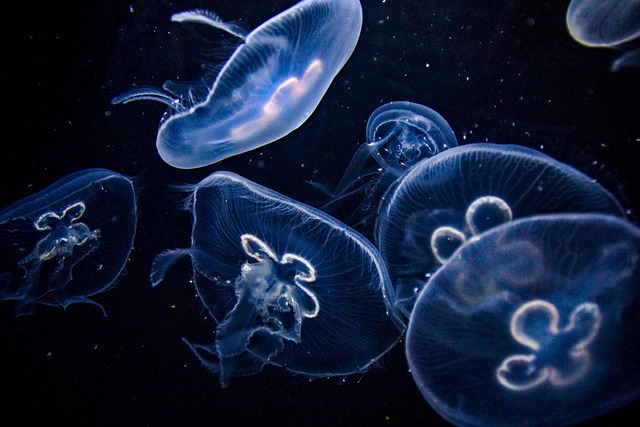Aquariums for zoos showcase live coral reef systems, fostering ecological diversity and visual appeal. These intricate ecosystems, maintained through advanced technology, support diverse marine life and promote conservation awareness. Despite challenges like water parameter stability and disease management, aquariums employ strategies like strict testing and research collaboration to ensure long-term sustainability. Global zoos are integrating live coral reef systems for educational value and to drive public interest in coral conservation.
Discover the vibrant world of live coral reef systems, a dynamic marine display that brings underwater wonders to aquariums worldwide. This article explores the intricate understanding of these ecosystems, delving into their benefits for zoos and aquariums, while addressing challenges in maintenance. We highlight innovative solutions and strategies to enhance marine exhibits with living corals, showcasing how these structures create captivating and educational experiences for both researchers and visitors alike within aquariums for zoos.
Understanding Live Coral Reef Ecosystems
Live coral reef systems are intricate ecosystems that serve as vibrant displays in zoos and aquariums worldwide. These dynamic habitats house a diverse array of marine life, from colorful fish and invertebrates to larger species like sharks and rays. Understanding these complex ecosystems is paramount for maintaining their health and ensuring the well-being of the creatures that depend on them.
Coral reefs form when coral polyps—small, soft-bodied animals—secret calcium carbonate skeletons, creating a physical structure that attracts and sustains various marine organisms. This symbiotic relationship between corals and other species fosters a rich, interconnected web of life. In zoos and aquariums, recreating these conditions involves meticulous planning, advanced technology, and dedicated care to maintain the delicate balance required for thriving live coral reef systems.
Benefits of Corals in Zoos' Aquariums
Live coral reef systems offer a dynamic and visually stunning addition to aquariums in zoos worldwide. Beyond their aesthetic appeal, corals provide numerous ecological benefits that enhance the overall health and diversity of marine ecosystems. Corals serve as habitats for a wide array of marine life, from small fish species and crustaceans to larger predators, creating complex food webs and promoting biodiversity.
In zoos’ aquariums, corals contribute to maintaining balanced water quality by absorbing excess nutrients and serving as natural filters. They also play a crucial role in carbon sequestration, helping to mitigate climate change impacts. Moreover, live corals attract visitors, fostering a deeper appreciation for marine conservation efforts and the intricate interdependencies within aquatic ecosystems.
Challenges and Solutions for Maintenance
Maintaining live coral reef systems in aquariums, especially for zoos and marine centers, presents several challenges. One of the primary difficulties is recreating the complex ecosystem found in nature while ensuring optimal conditions for the diverse species housed within. Corals, in particular, require specific water parameters, including temperature, salinity, and water flow, which can be hard to maintain stably. Additionally, regular monitoring and treatment against diseases, algae overgrowth, and parasitic infections are crucial but demanding tasks.
To overcome these challenges, aquariums employ advanced filtration systems, controlled environmental conditions, and rigorous water quality testing routines. They also implement innovative solutions like automated feeding mechanisms and remote-controlled lighting systems to maintain the reef’s health. Collaboration with marine biologists and regular research contribute significantly to refining husbandry practices, ensuring the long-term sustainability of these dynamic marine displays for both educational purposes and conservation efforts.
Enhancing Marine Displays with Dynamic Corals
Aquariums in zoos around the world are constantly seeking innovative ways to captivate visitors and showcase the beauty of marine life. One game-changing element that has been gaining traction is the integration of live coral reef systems. These dynamic ecosystems not only provide a vibrant and ever-changing backdrop for marine displays but also offer unparalleled educational opportunities.
By replicating the intricate complexity of natural coral reefs, zoos can create stunning visual spectacles that draw in audiences. Live corals, with their diverse colors, shapes, and textures, create a mesmerizing tapestry underwater. Moreover, dynamic reef systems allow zookeepers to monitor and maintain the health of these delicate organisms, ensuring optimal conditions for various marine species. This hands-on approach not only enhances the visitor experience but also fosters a deeper understanding of coral reef conservation among zoo-goers.
Live coral reef systems offer a dynamic and captivating experience for both marine life enthusiasts and zoos looking to enhance their aquarium displays. By understanding and maintaining these delicate ecosystems, zoos can provide visitors with a glimpse into the vibrant world beneath the waves. The benefits of incorporating live corals in zoo aquariums are numerous, from promoting biodiversity to creating visually stunning exhibits. While challenges exist, such as water quality management and disease prevention, innovative solutions and dedicated care ensure thriving coral reef systems. These efforts contribute to not only captivating visitors but also fostering conservation efforts for these vital marine habitats.
